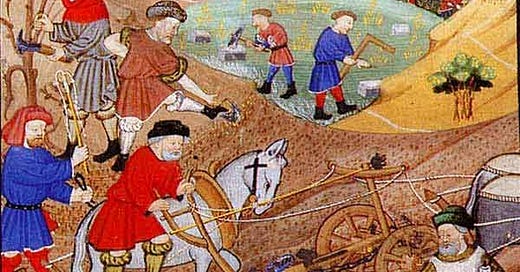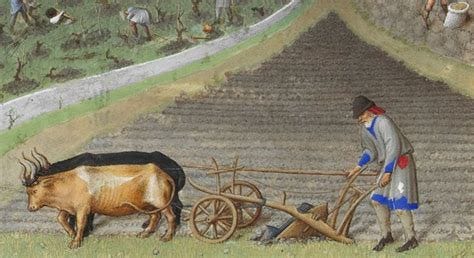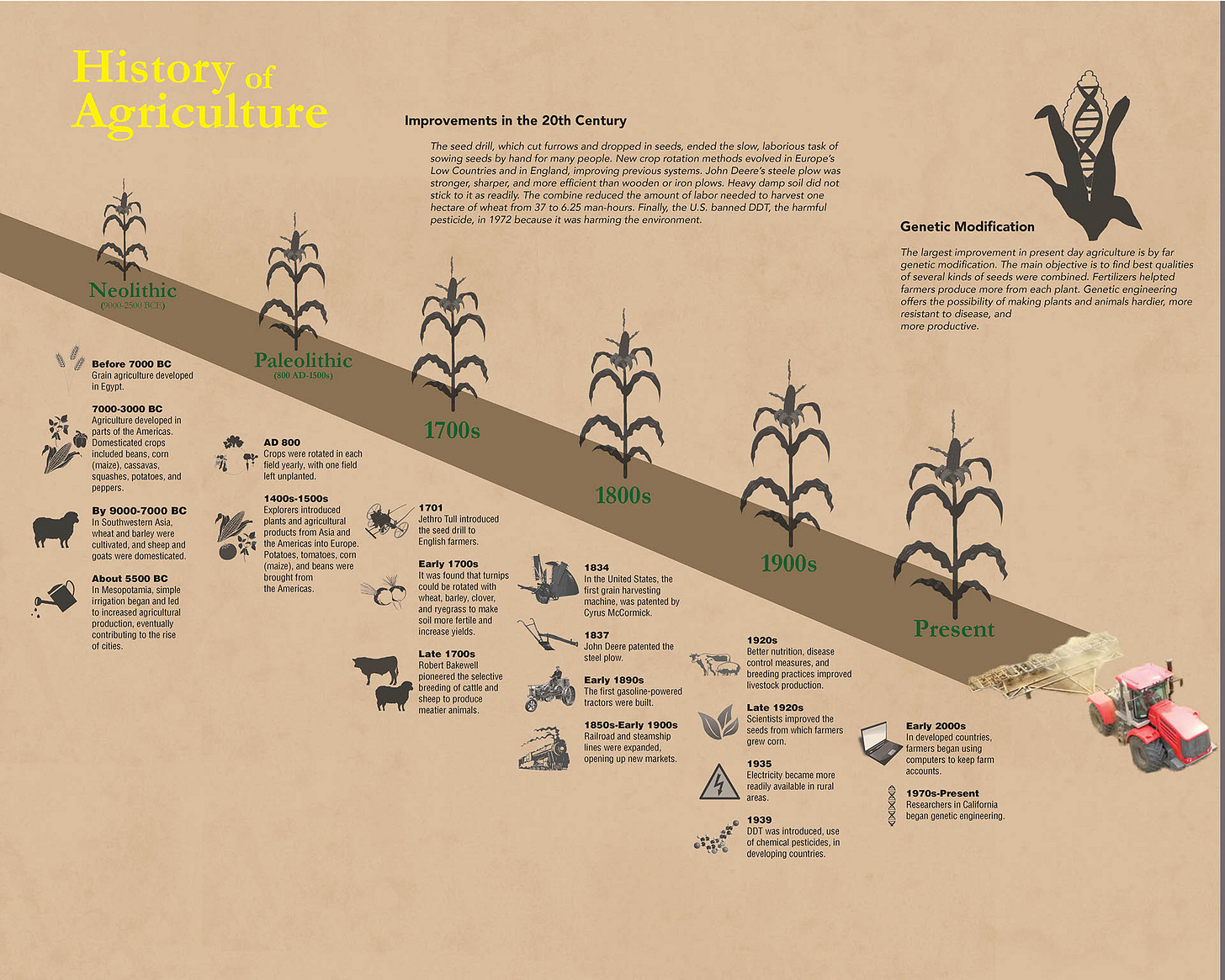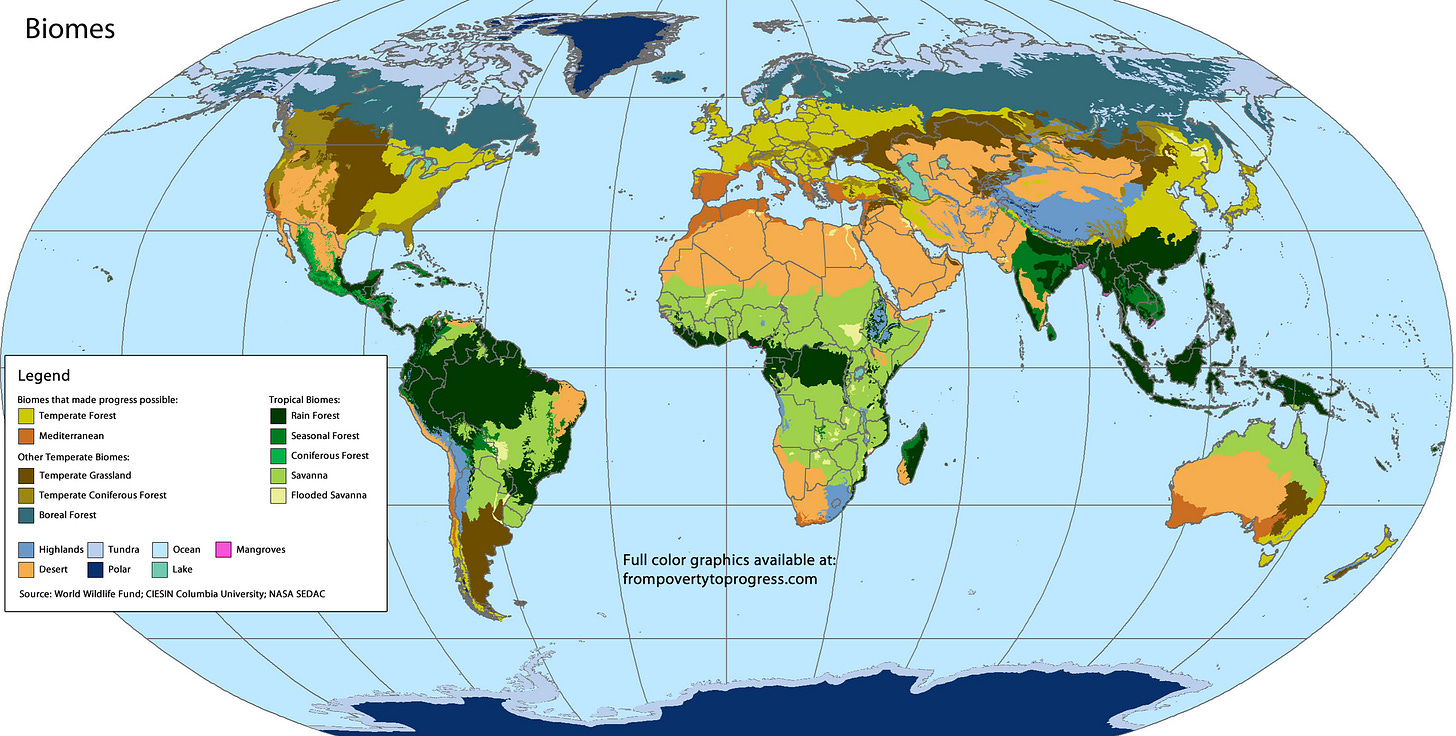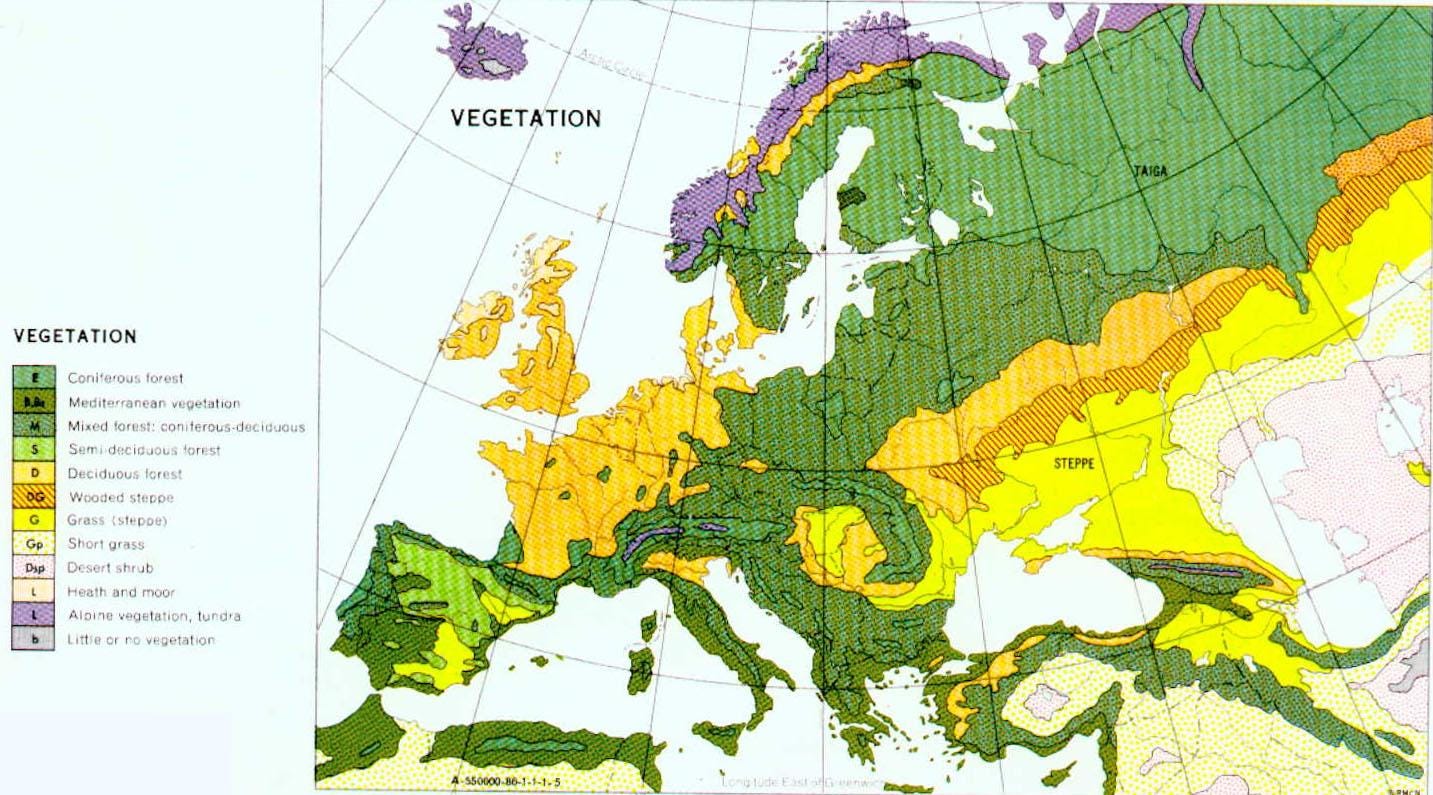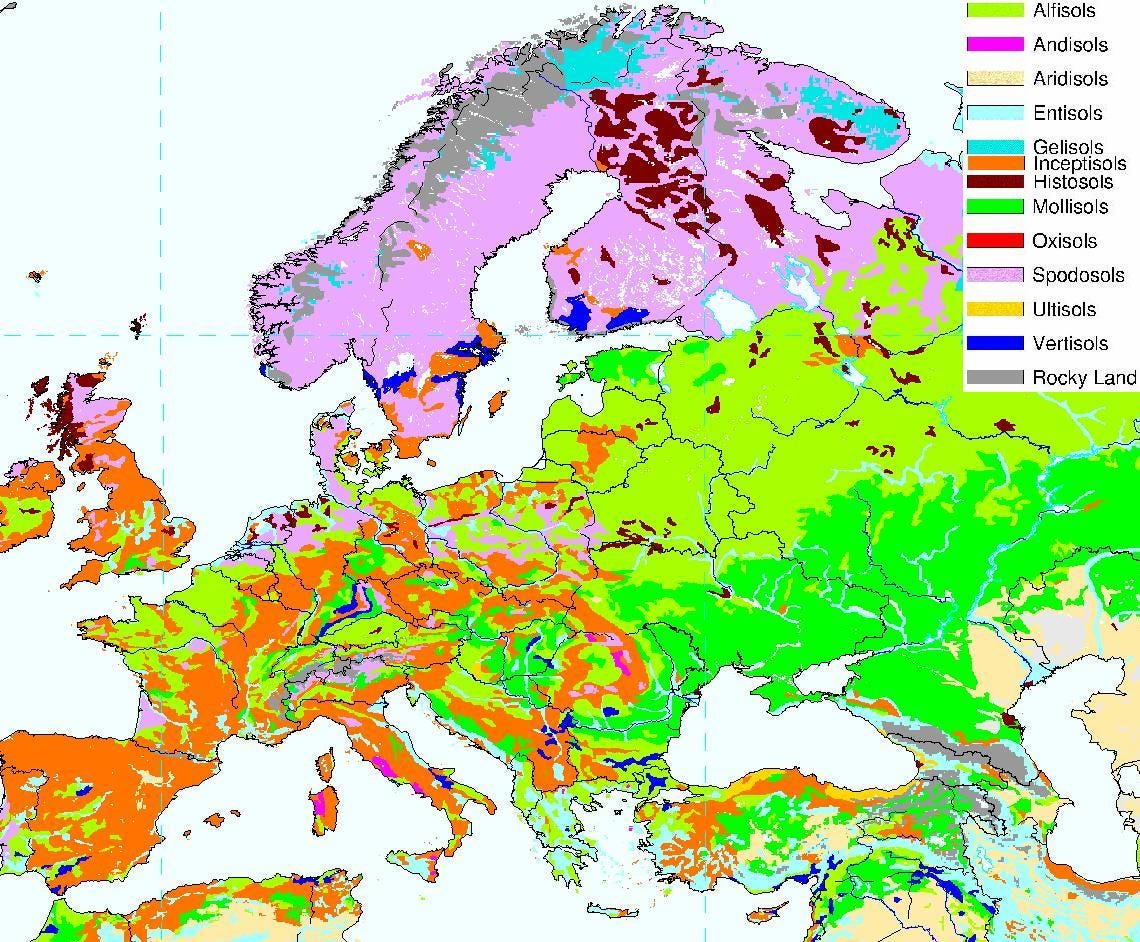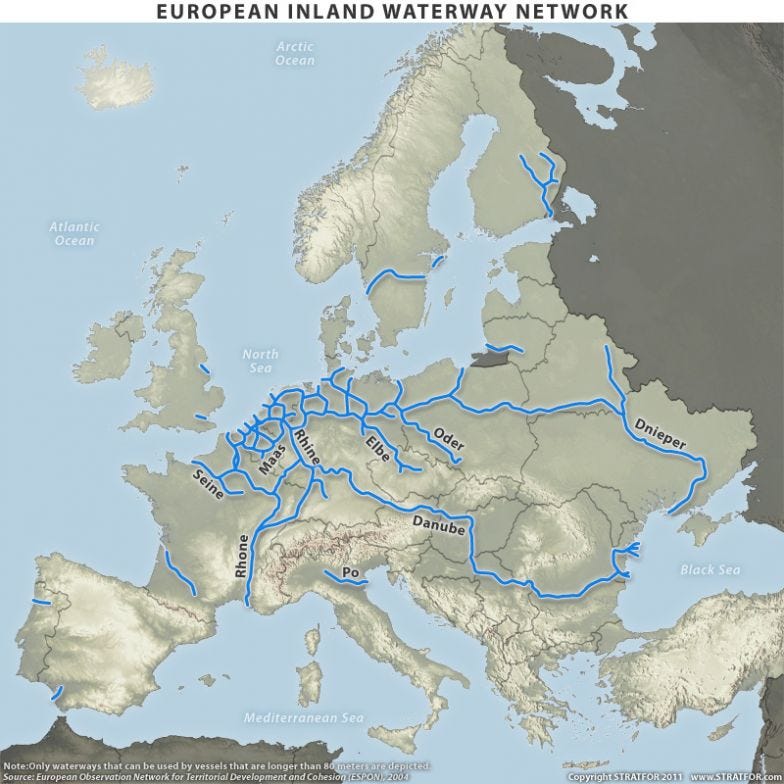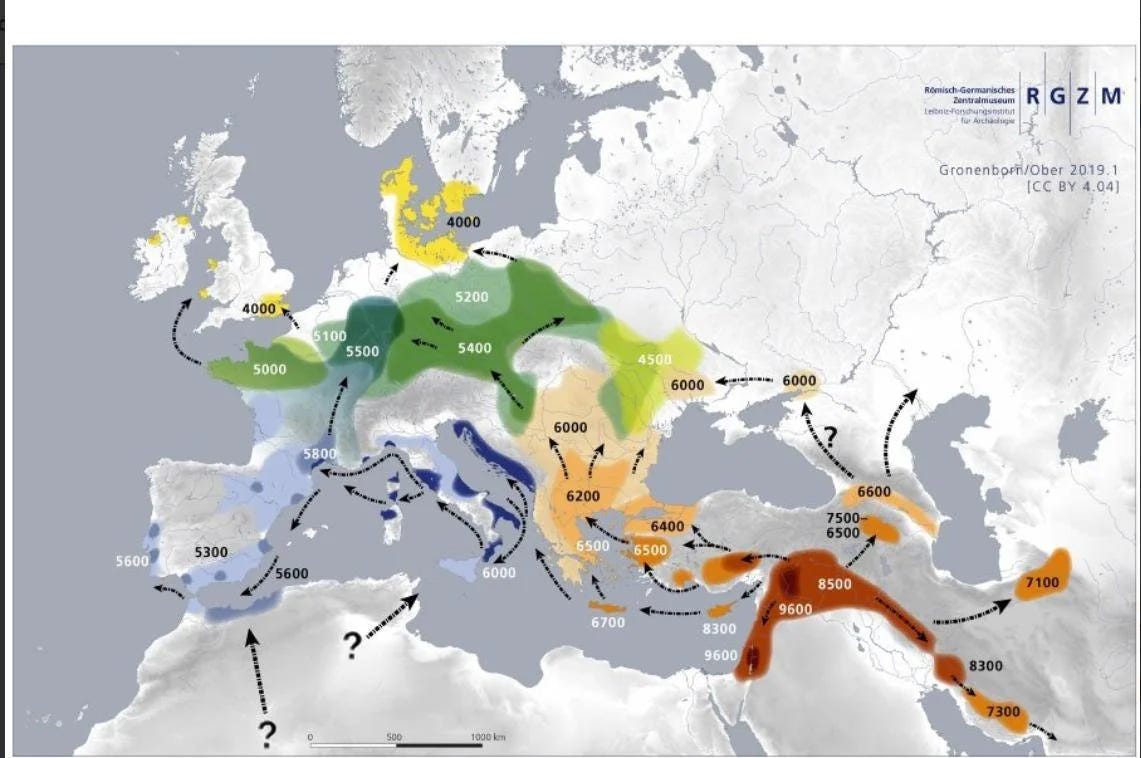Farming innovations paved the way for modern progress
But it took about 10,000 years of experimentation to do so.
The term “innovation” brings to mind digital technology, artificial intelligence, biotech, and other fields on the bleeding edge of modern technology. Very few people think of innovation in agriculture, but they should. With the possible exception of the energy industry, no other industry has played a more important role in creating modern material progress. Without modern agriculture, the world of material progress we live in would not have been possible.
And that modern agricultural industry was a long time coming. It is the outcome of 10,000 years of experimentation by humble farmers. In addition to enabling modern progress, agricultural innovation played a crucial role in explaining why Europe became rich long before other regions.
While the Mediterranean region and Europe were highly constrained by limited agricultural production, the same can be said for all the other Agrarian societies of Eurasia. By about 500 BCE, the basic subsistence patterns for each region had evolved. While there was a great deal of geographical variation, subsistence patterns in most regions evolved very little between 500 BCE and when they were first exposed to European conquest after 1500. Even after European conquest, there was typically very little change in subsistence patterns.
Geographical constraints seriously limited the innovation of subsistence technology and organizations. Even the most complex societies in East Asia, South Asia, Southeast Asia, the Middle East, and the Mediterranean had basically the same subsistence pattern in 1500 as they had 2000 years previously.
And those subsistence patterns barely changed until well within the 20th Century.
See more articles on Food and Agriculture:
Why agriculture is humanity's greatest technological innovation
Why Agrarian societies dominated recorded history for nearly 5000 years
Only one region continually innovated
The one people that experienced constant, if very slow, agricultural innovation after the year 1000 (or so) was Northwest Europe and the regions that were settled by inhabitants from that region. Northwest Europe, in contrast to all other regions, went through multiple phases of agricultural innovation. Each pattern generated a greater surplus than the previous, enabling the growth of cities, more complex technologies, skills, and social organizations. Each successive subsistence pattern enabled progress but did not guarantee it.
Before 1000 Northwest Europe had a subsistence pattern that was not so different from Mediterranean regions. While the Mediterranean region preserved the same subsistence pattern for the next millennium, however, Northwest Europe underwent radical changes over the following centuries. And while the few changes that occurred in other regions resulted largely from foreign conquest, Northwest Europe evolved new subsistence patterns due to internal stimulus.
After 1000 Northwest Europe (and the regions that were settled by Northwest Europeans) innovated successively more productive subsistence patterns:
Fallowing and animal-drawn plow during Medieval times.
Animal-drawn plow and no fallowing.
(developed in 14th-17th C Flanders/Netherlands and 18th C England/Rhine river valley, then 19th C Northwest Europe).Mechanized animal-drawn cultivation
(developed in 19th and early 20th C North America and Northwest Europe).Motorized cultivation
(developed in early 20th C North America and then post-WW2 Western Europe).Modern agriculture based upon genetics, synthetic pesticides, and combine harvesters
(developed in post-WWII North America and Western Europe).
We will explore these other agricultural transitions in later articles, but for now, we will focus on the innovations of the Medieval era in Northwest Europe. While one does not associate innovation with the Medieval farmer, they deserve far more respect than they typically get. To enable the evolution of more complex societies, farmers must generate a food surplus. The food surplus is the amount of food that can be exported from the farm to other farmers or to city dwellers.
This is not as simple as it might seem. A farming couple must produce enough food for themselves, their children, and any elderly or disabled dependents. In addition, they must feed their farm animals, pay taxes, land rents, or tithes plus a little extra to sell to the local market so they can purchase or repair farm implements. They also must store their best seeds over the winter to seed next year’s crop. Finally, farmers need to be able to do this even during times of bad harvest. The previous agricultural system could barely produce enough food for their personal needs, let alone a steady stream of surplus for the cities.
The foundation upon which the growth of Medieval Europe was built was a fundamentally different method for raising food than the Ancient Greeks and Romans. While Ancient farmers depended upon ox-driven scratch plows with a two-year rotation, Medieval farmers developed a far more productive system based upon horse-driven heavy plows and a three-field system.
Origins of the Medieval Farming System
This new farming system likely originated in what was called “Francia”, the heart of the Carolingian empire. Francia consists of modern-day Belgium, Northern France, and the Upper Rhine. The Franks leveraged their agricultural productivity into an empire that dominated most of Continental Northwest Europe.
Francis was blessed with many geographical advantages. Most importantly, the region was situated in a Temperate Forest biome. It is not a coincidence that Temperate Forest biomes in Europe, East Asia and eastern North America have played an outsized role in both human history and material progress.
Not only did the region have a Temperate Forest biome, but Francia was particularly conducive to the growth of Deciduous Forests. While other parts of the Northern European plains tended to have mixed Conifer and Deciduous forests, Francia was covered almost entirely by Deciduous forests.
Deciduous forests were so advantageous because the leaves that fall every autumn deposit nutrients into the soil. While the needles from conifers leave the soil highly acidic with low levels of nutrients, leaves create all the nutrients that crops need. Just cut down the trees to clear space for the plows, and you have a ready-made agricultural field.
Francia was also blessed with the largest tracts of Alfisol soils in Western Europe. Alfisol soils were the most productive type of soil for agriculture. The entire region was on the plains at an altitude of less than 500 meters, so the threat of erosion was much smaller than in mountainous regions.
The region also had a large network of navigable rivers that reached deep into the heartland of the continent. The Seine river in modern-day France, the Maas, Scheldt, Duele, Leie, Scarpe, Aa and Reie rivers in modern-day Belgium and the massive greater Rhine river basin were all navigable year-round. In addition, the rivers provided plenty of drinking water for humans, farm animals and crops.
All of these advantages enabled Medieval farmers to transform agricultural practices while lowering the risk of famine during the transition.
The region also had an unusually long Growing Season:
Finally, the Francia and the rest of Europe were connected via a landbridge to the Middle East. The Middle East was the first, and most important, region to invent agriculture and establish Horticultural societies.
Settlers from the Middle East were able to bring the following with them:
Domesticated plants, particularly wheat, oats, and rye.
Domesticated animals, particularly the horse, cow, goat, sheep, and pig.
Agricultural technologies that enabled both of the above to be used as a food source.
Horticultural societies eventually spread from the Middle East to most regions within the Mediterranean, Temperate Forest, Tropical Forest, or Tropical Highland biomes. This created a broad belt of Horticultural societies running from East Asia to Europe, as well as a few isolated areas on other continents such as New Guinea, the African Sahel, Mesoamerica, Amazonia, and the Andes.
Eventually, those Horticultural societies with the Mediterranean and Temperature Forest biomes evolved into Agrarian societies. The region of Francia was able to put agricultural productivity to the next level sometime around the year 1000. The result was the Medieval era.
Geography made the Medieval farming system possible, but it did not make it inevitable. The Medieval farming system was created by dozens of generations of peasants who risked their lives to work brutally hard to:
feed themselves
feed their families
pay the land rent and taxes to their local lord
See more articles on Food and Agriculture:

